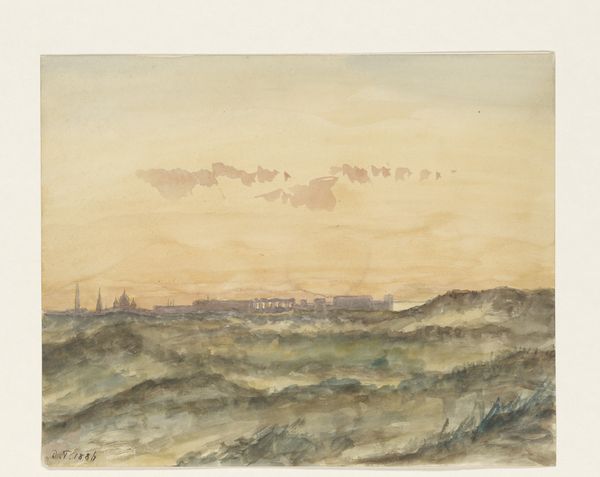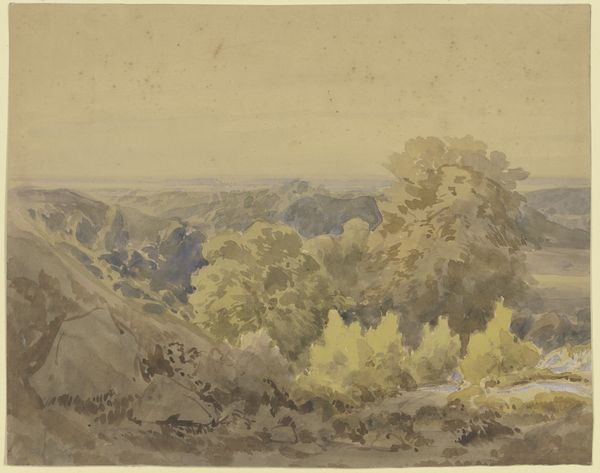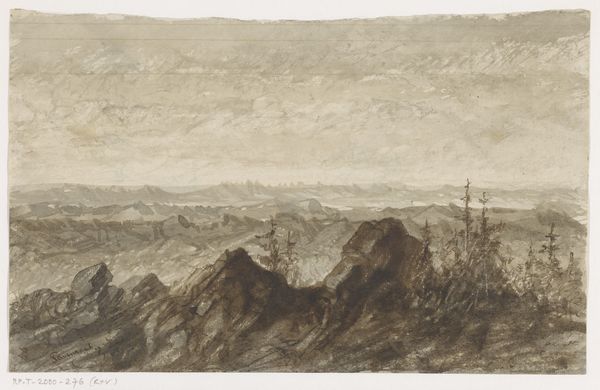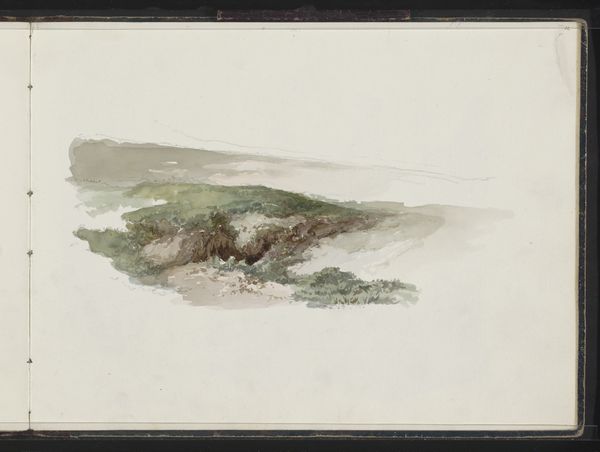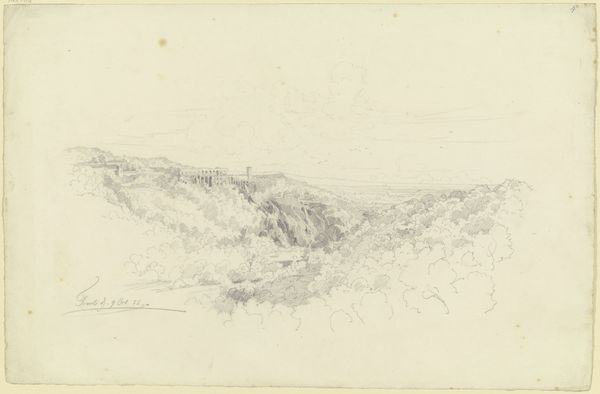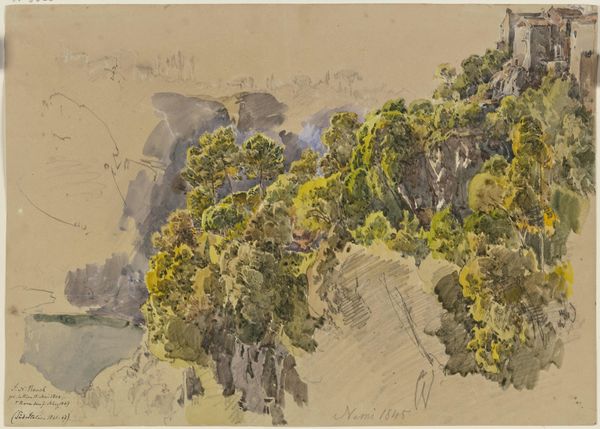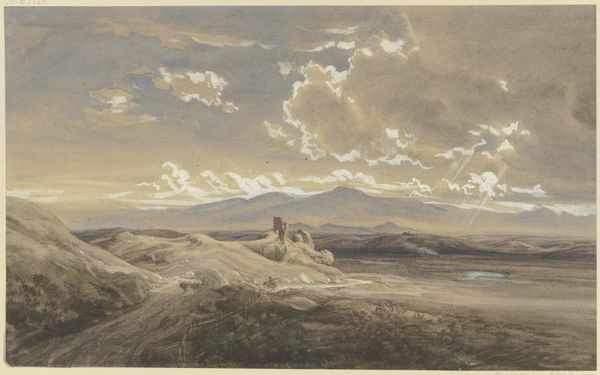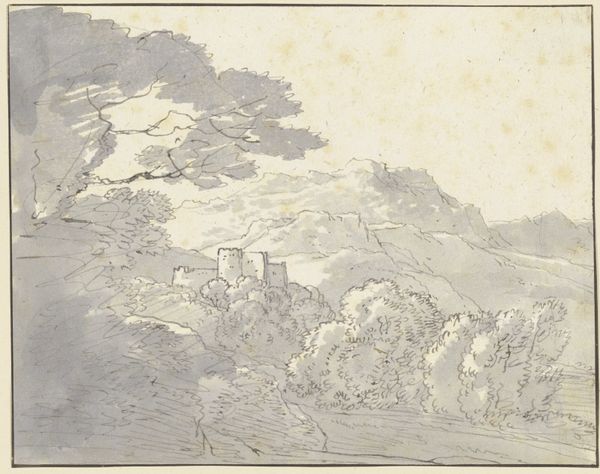
drawing, painting, watercolor
#
drawing
#
painting
#
landscape
#
watercolor
#
romanticism
#
watercolor
Copyright: Public Domain
Curator: Before us, we have "The Waterfalls of Tivoli" by Johann Nepomuk Rauch, completed around 1845. The work is on display here at the Städel Museum, rendered delicately in watercolor and drawing. Editor: The immediacy of the sketch is compelling. There's something hauntingly ephemeral about the falls. The unfinished areas draw attention to the liminality inherent in natural spectacles—powerful, but also transient, as we are. Curator: The composition leads your eye strategically. The detailed buildings anchored on the left are balanced against the mistiness on the right, guiding you to contemplate the play of structure and form versus fluidity. Note how the skyline sits comfortably, too, against the unrendered void. Editor: That sense of “void” speaks volumes, doesn’t it? Tivoli has always been a site laden with class dynamics, a place of aristocratic leisure juxtaposed against the labor needed to sustain it. Does the piece unintentionally evoke the absent working classes through these ethereal voids? Curator: Such interpretations rely heavily on external frameworks. Consider, however, how Rauch handles color: muted greys and browns anchor the landscape, offset by that streak of warm tones on the horizon. That chromatic range echoes through to the buildings to reinforce the sublime nature. Editor: And doesn’t the sublime also imply social disparities? This awe, this humbling before nature’s grandeur – who had the privilege to even contemplate it in 1845, during the era of expanding industrial capitalism? Were landscape depictions a kind of palliative escape only available to the few? Curator: One might also suggest the unfinished sections are to emphasize an idealization of Romanticism as a movement - only glimpses into these locations, nothing complete. That's certainly within his right to choose those sections as stand-ins. Editor: It's undeniable. This piece offers an intimate vision into Tivoli’s aesthetic, though one might also look deeper at that vision's broader cultural situation at the time, where artistic movements coexisted in an imperfect, dynamic reality of shifting identities.
Comments
No comments
Be the first to comment and join the conversation on the ultimate creative platform.

